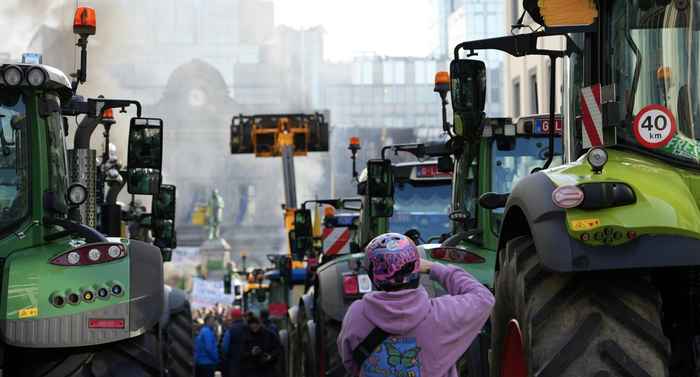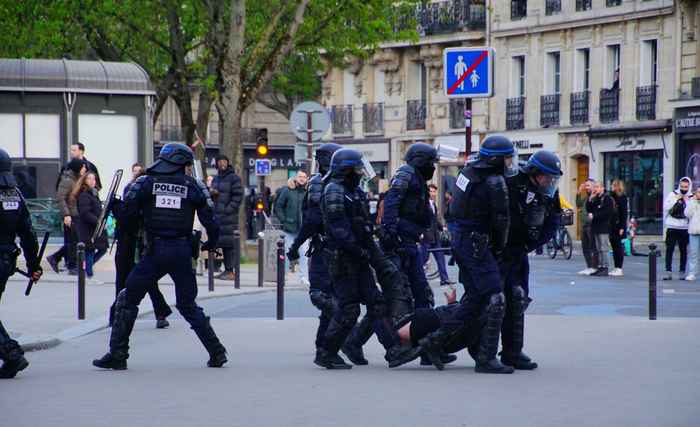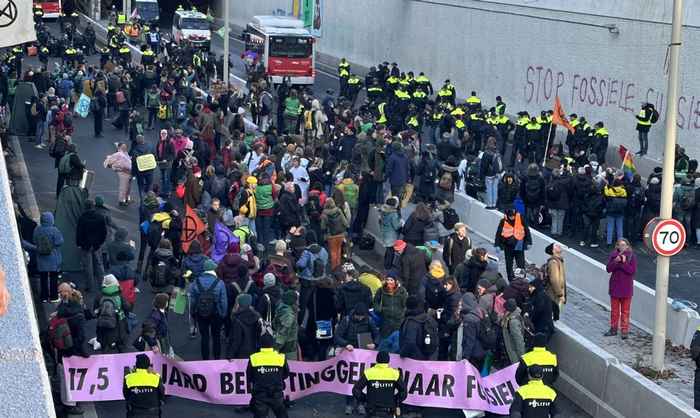Trust in the street: why demonstrating is good for democracy
‘I didn’t like seeing tractors drive through the city, but it was effective’
17 October 2025
The short answer to the last question is yes, says Jan Willem Duyvendak, Professor of Sociology at the University of Amsterdam. He has been doing research into protest and social movements for years. ‘Demonstrations send a message to politicians, whether they want to listen or not. When citizens unite in the streets, they attract attention. Forcing politicians to respond.’

Halsema keeps repeating that everyone has the right to demonstrate.Jan Willem Duyvendak
At the same time, the influence of a protest is difficult to measure, Duyvendak acknowledges. ‘Not every banner leads directly to a new law. Some protests aren’t even aimed directly at politics. The Black Lives Matter movement began as a protest against police violence in the US but evolved into a larger movement against racism worldwide. Even if there’s no immediate policy change, demonstrations push topics onto the political agenda. They shift power relations and reveal anger within society.’
Protest as measuring device for a healthy democracy
The reaction of a country towards protests says a lot about the state of its democracy, Duyvendak explains. ‘In the Netherlands, the government generally has a positive attitude towards demonstrators. Amsterdam’s mayor Femke Halsema keeps repeating that everyone has the right to protest. And protests in the Netherlands rarely escalate. The campus protests at the University of Amsterdam and the recent far-right violence in The Hague are exceptions.’

More and more Dutch citizens are participating in public debate, Duyvendak tells. ‘People are increasingly taking part in surveys, signing petitions, and donating to activist groups, including those with lower levels of education or smaller social networks. The NOS news now frequently goes to markets to ask for people’s opinions, out of fear of overlooking “practically educated” citizens. More demonstrations don’t necessarily mean “more discontent or more problems.'

Radical protests draw attention but can lose the support of undecided citizens.Jan Willem Duyvendak
'It means that we live in a system where more people can and want to speak out in different ways. It helps that the Netherlands has no electoral threshold, many advisory councils and consultation structures where concerns can be voiced, and a political culture that takes citizens seriously.’
How to get attention for a protest
In the past, newsrooms decided which protests deserved news coverage. Today, demonstrators can show themselves directly via social media. Yet, Duyvendak says, there’s still a logic to what becomes newsworthy:
- Mass participation: ‘The more people join in, the harder to ignore. Take the “Red Line” protests in the world. News outlets simply couldn’t look away.’
- Radical tactics: ‘If a protest isn’t large, it has to stand out. When Extinction Rebellion blocked the A12 highway, it drew massive attention.’
- Innovation: ‘A form of protest that hasn’t been seen before also makes headlines. Like throwing soup on a Van Gogh painting.’
However, these strategies have their downsides, Duyvendak warns. ‘The bigger a protest, the harder it is to top the next time. And the tenth climate march is less surprising than the first, so the shock effect fades. Radical protests regain attention but risk losing support from the public.’
A look across borders
In other countries, protests unfold quite differently. In France, there’s a ‘pressure cooker dynamic’, Duyvendak explains. ‘The government often use violence against demonstrators, and the protesters fight back. The French government tends to see protests as a threat rather than something that strengthens democracy.’

In Germany, attitudes towards protest are more similar to those in the Netherlands. ‘After World War II, there was a long period of distrust toward activist movements. But that changed with the rise of the Green Party. Still, German police tend to act more forcefully than their Dutch counterparts.’
Protest as a sign of trust
Duyvendak concludes: ‘Demonstrating is actually a sign of trust in democracy. That may sound strange, because many demonstrators explicitly say they don’t trust the government. But the very fact that they show up to the streets to protest shows that they believe they can make a difference.’
About Jan Willem Duyvendak
Jan Willem Duyvendak is Professor of Sociology at the University of Amsterdam and Director of the Netherlands Institute for Advanced Study (NIAS) of the Royal Netherlands Academy of Arts and Sciences (KNAW). His current research focuses on the welfare state, the sense of belonging, and the ‘us-versus-them’ divide between social groups.
